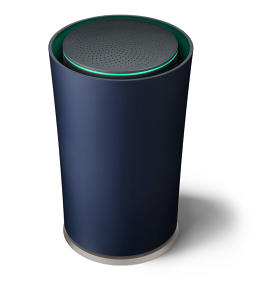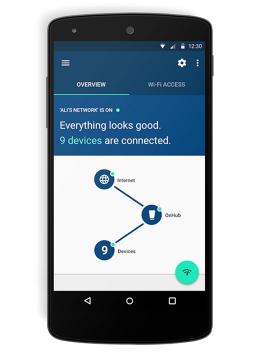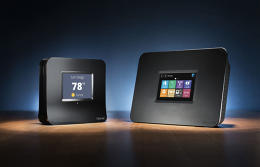Google OnHub’s biggest problem: Making The wi-fi Router Loveable
The tasteful new router will be the gateway to a better home, however provided that people begin caring about routers in the first position.
August 24, 2015
in the mind of IDC analyst Jonathan Gaw, changing a wireless router is more or less like getting a root canal.
despite the fact that there was once a approach to make the procedure more tolerable, you’re most likely now not going to volunteer unless you truly need it. “unless i’ve some serious dental considerations, i’m no longer going back, even supposing you promised me it can be painless,” Gaw says.

Gaw is explaining one of the vital boundaries Google faces in reinventing the wi-fi router with OnHub, a $200 software that begins shipping later this month. OnHub’s cylindrical design doesn’t resemble a customary router, and that’s the point; it’s supposed to take a seat in the open, where its round sample of 13 antennas can sniff out congestion and ship the perfect signal to dozens of gadgets. Google additionally guarantees a trouble-free setup, conducted solely through a companion smartphone app.
OnHub would possibly no longer be so fascinating if all it used to be ever going to be was once a more fine router. however the quantity of radios, storage, and reminiscence that Google has additionally packed into OnHub suggestions at much better ambitions. whereas it is usually a just a router at this time, it might eventually function the switchboard for the connected properties of the long run.
nonetheless, none of that may occur unless the perception of wireless routers rises above mere tolerance. For Google to prevail, it must take on the unenviable job of convincing folks that house networking is valuable. Gaw places the challenge bluntly: “nobody gives a crap about their router.”
dear Router, Stingy Market
one of the simplest ways to quantify shopper sentiment towards wi-fi routers is to look at how continuously folks improve and what they’re prepared to pay. sadly for Google, the market isn’t exactly fertile ground at the moment.

in step with IDC, the common shopper spent $101 on an 802.11ac router in the first quarter of this 12 months, about half of what Google is asking. in the event you count all routers, and not just the newest 801.11ac standard, the typical promoting value falls to only $fifty nine.
“At $199, it’s laborious, because it’s now not an impulse purchase,” Gaw says. “not most effective is it not an impulse buy, it’s an expensive buy to exchange one thing that, likelihood is, is working k for me, and that i’d in reality need to do work to install, no matter how simple Google guarantees it’s.”
Even router maker D-hyperlink acknowledges that changing a router isn’t a high priority for most consumers. Dan Kelley, D-hyperlink’s vice president of promoting, says customers in most cases wait virtually 5 years to improve, though the upgrade cycle is also nearer to 3 years for early adopters. That jibes with a 2014 IDC survey that found the common age of a router to be about three years previous in U.S. homes.
“it can be now not the software that you wish to have to hurry out and substitute frequently—at the least the general client does not—because if it is working, you don’t want to debris with it,” Kelley says.
And keep in mind, this best contains homes that aren’t leasing a router from their internet service suppliers, some of which make it troublesome for subscribers to swap in their own tool.
Redefining The Router
the good news is that the router-shopping for public could also be starting to demand higher than a cut price-basement router, particularly as they connect a better collection of PCs, telephones, drugs, good TVs, and good-house products to their network.
while D-hyperlink’s Kelley notes that the $50 router market isn’t going any place, the company is seeing a “wholesome increase clip” for its excessive-end industry. In June, 58% of D-hyperlink’s 802.11ac routers supplied speeds of at the least 1700 Mbps (1300 Mbps on one band, 450 Mbps on the opposite), with a regular selling value of $186 among those quicker fashions.
“the most important demand that we’re seeing is in the excessive-end market where buyers are searching for—I wouldn’t say future-proofing—but certainly an awfully highly effective router that they are able to bring in and give a boost to this entire host of recent units,” Kelley says.

Securifi is seeing a an identical trend emerge with its touchscreen Almond routers, which vary from $ninety to $250. whereas gross sales of Securifi’s $250 Almond+ router are “much, much smaller” than the more cost effective models, CEO Rammohan Malasani says the stability is slowly starting to shift. “folks have so many Wi-Fi units, they usually want to ensure they have one of the best router,” he says.
Malasani has additionally seen a shocking quantity of consumers purchasing Almond as a community extender, with its constructed-in contact reveal allowing for simple setup. OnHub, which makes use of an inaudible tone to search out neighborhood iOS or Android devices for setup, may in theory be simply as seamless. “talking to shoppers, we realized this used to be an awfully fascinating use case,” Malasani says. “Extenders most often was truly, actually troublesome to set up in the event you do not have a reveal.”
If the router market is trending toward greater prices and even multiple get entry to points, Google is also beforehand of the curve. It simply must persuade people that its suave hardware design and person-friendly device supply more than the pure speeds and feeds that different excessive-end routers supply.
Whose house is that this?
Assuming Google can wreck into the router trade, it’s not likely the hunt large might be happy with only serving up Wi-Fi connections. the bigger purpose—and the explanation OnHub includes radios to improve Bluetooth good, Thread, and ZigBee—is for Google to establish itself as a linked-house gatekeeper. for those who’re already the use of OnHub’s app to regulate Wi-Fi units, why not turn it into the main interface to your connected lightbulbs, door locks, and thermostats?
Wink CTO Nathan Smith thinks this technique makes sense in conception, and Wink—which deals a provider that ties collectively a large number of smart-dwelling products through a single app—has been speaking to router makers about doing one thing an identical. “i believe that one of the crucial toughest things about getting into related products is provisioning these products and getting on-line for the first time,” Smith says. “i think whilst you convey the router into that equation…you could have issues like push-button provisioning which might be in point of fact useful to consumers.”
the enormous question—and the person who most concerns Smith—is whether or not Google will deal with all these gadgets and connections equally. With Wi-Fi, after all, you by no means have to fret about whether your new phone or pill is suitable with the router you obtain a few years ago. the location turns into far more complicated once you begin tying in various sensible-house products, each with their very own app structures and communique protocols. Smith fears that Google will by hook or by crook provide preferential therapy to its own Brillo platform and Weave protocol. (It’s value noting that OnHub doesn’t enhance Z-Wave, which enjoys huge adoption amongst current sensible dwelling devices.) the danger is that you simply nonetheless end up with a handful of disparate apps and hubs to do your bidding.
“even if Google would possibly like—as a result of their size—to make Weave the dominant protocol, it’s simply no longer a truth,” Smith says. “this is not a VHS/Betamax state of affairs where we are able to come up with some easy encoding and decoding know-how that everyone can use. it is a much more complicated state of affairs since you’re talking about merchandise which might be evolving over time.”
Smith prefers the manner of Amazon and its Echo related speaker, which provides a suite of voice instructions to quite a lot of good-residence products and hubs (together with Wink) over Wi-Fi. basically, Amazon is letting everyone else sort out the ongoing good-home requirements war, while providing a layer of extra products and services on high.
Google’s technique is much riskier, however the payoff would be a router that actually feels just like the backbone of a futuristic related house. And if it fails? well, it could feel like pulling tooth.
(145)













